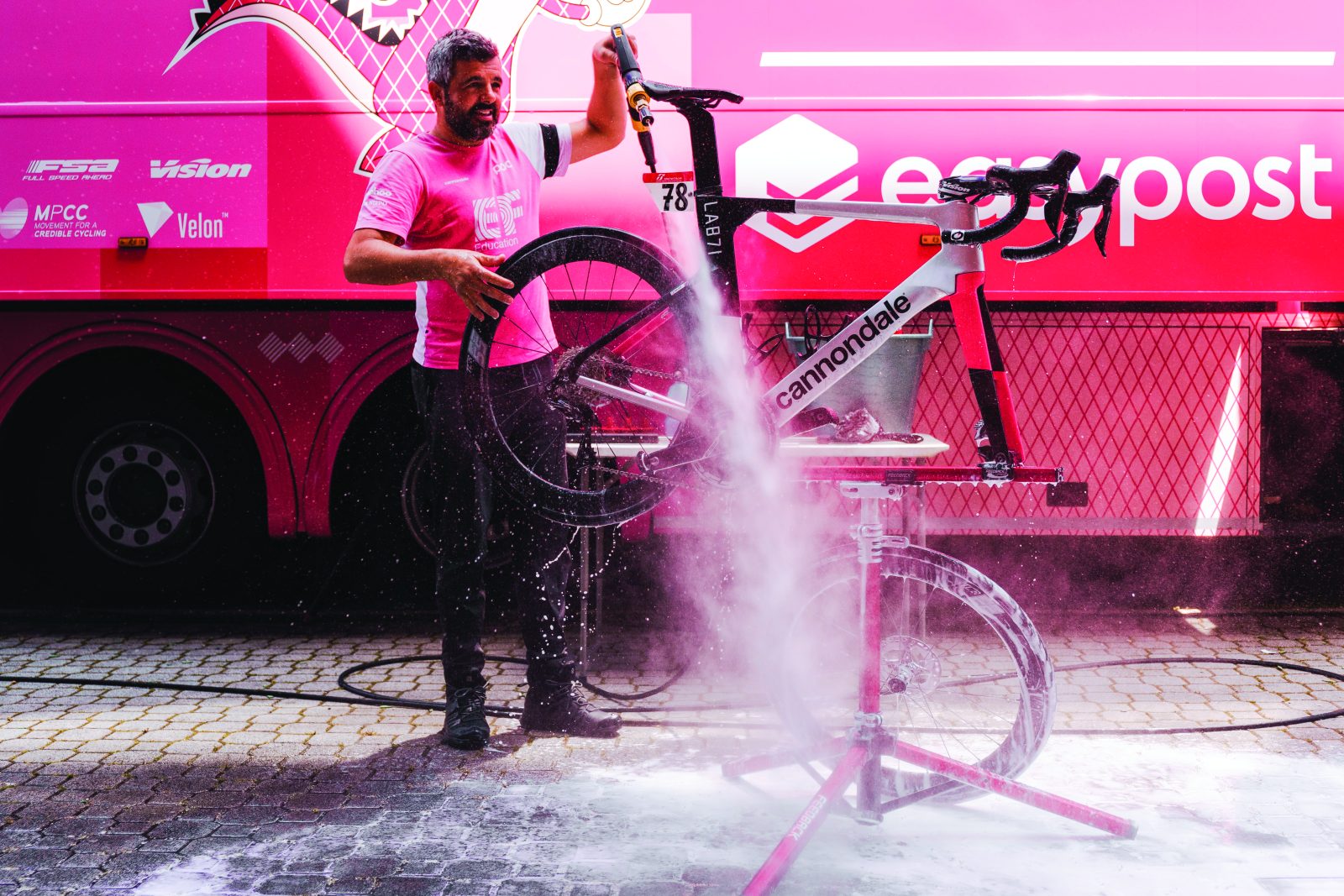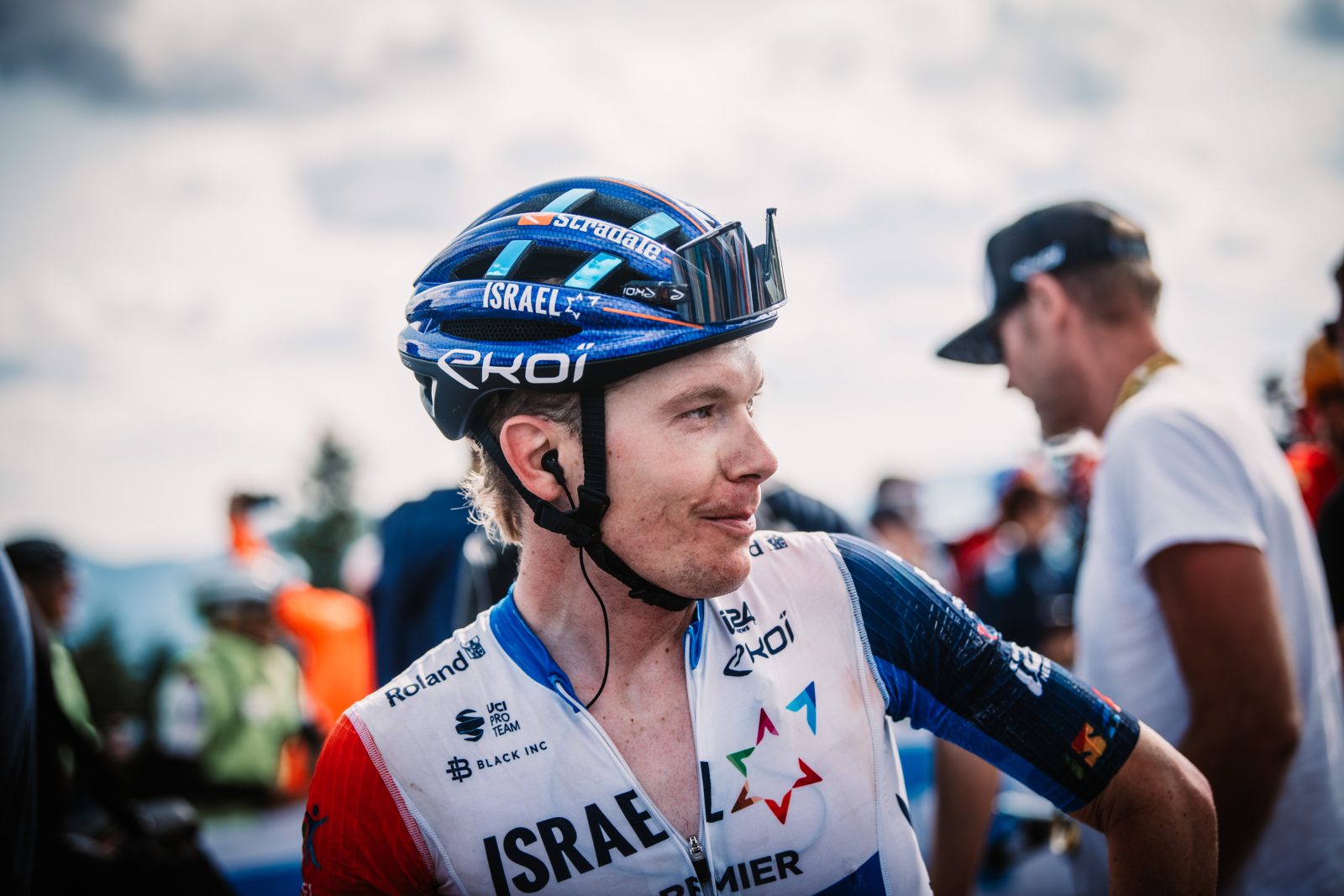Someone has to keep the bikes working and the riders riding at the big races. For EF Education-EasyPost it’s Helder Gomes, one of the most experienced mechanics in the game.

Words James Witts Photography Harry Talbot
What were you doing at 15 years old? Perhaps studying hard at high school, or being refused entry to your local night club because of your dodgy fake ID? ‘That was when I took up my first job as a mechanic,’ says Helder Gomes.
‘It was with Continental team Barbot Gondomar in my home country of Portugal.
That was 28 years ago. I’ve been with EF for the past eight years. I don’t like change.’
Unlike the sport he’s been married to for nearly three decades. ‘This sport has evolved hugely,’ Gomes says, reflecting on his career. ‘It used to be cables, cables, cables.
Now we have technology like electronic wireless.
In our team, that’s Shimano Di2. In many ways, that has made the job simpler, especially with the software updates.
In others, it’s harder. In the past, we’d have to change cables once or twice a season; now we might need to tweak something at every race even if it’s just charging the battery.
‘The focus on detail has also changed. Now it’s like Formula 1. But arguably the best change is where we work.
Once, we’d always have to work on the bikes outside and fans would come over and distract us.
Now we have the big trucks, so we can work inside and keep focused on the job.’ At a Grand Tour, ‘the job’, as for many of the support staff, involves a 14-hour focus every day.
‘We’re away for four weeks and, in general, I get up at 7am and finish work at around 9pm.
After breakfast I’ll head out to the truck and bam, bam, bam, help load up the race cars with bikes and wheels.
Each of the eight riders has two spares per stage plus the one they’re on, so that’s 24.’
With around $500,000 worth of equipment clamped to the team cars’ roofs, we suspect Gomes’s approach to loading the bikes isn’t quite as bam, bam, bam as he suggests.
‘Once the cars are loaded up I’m responsible for the team truck and I’ll always drive straight from one hotel to the next hotel rather than cover the stage.
That could be a 50km drive or it could be over 200km. When I get there, I’ll repair any problems with the extra bikes in the truck.
Later on, when the other mechanics arrive, I’ll help to wash the bikes, change flat tyres… whatever’s needed to ensure the riders have the best working equipment possible for the next day. That usually continues till late into the night.’
Not all bikes get the same amount of attention.
‘Some riders are more particular about their setup than others,’ Gomes says when we ask how many micro-adjusters are in the team compared to macro-absorbers (terms coined by ex-Team Sky physio Phil Burt – micro-adjustors are perpetual bike fiddlers while macro-absorbers, like Geraint Thomas, the subject of this issue’s Profile feature on p68, carry on even if they’ve broken their pelvis).
‘One rider I worked with would always play around with his saddle height,’ Gomes says.
‘One day he’d move it one millimetre up, the next one millimetre down.
I said to him, follow the stronger riders like Rigoberto Urán. Rigo and riders like of Richard Carapaz are measured up for the new bikes at the off-season training camp and then barely touch their position.
Touch too much and you lose focus.
Your mind runs away from you and you stress that maybe your training’s not going well or you’re not in good condition.
You must relax to ease the pressure and grow into a better rider.
‘I say to the other mechanics all the time, keep calm, keep calm.
Whenever you panic or stress, mistakes happen.
Of course, that’s not always easy, especially when the race is rushing past so quickly or you have a big crash and you have four riders shouting, “I need a bike!” or “I need a wheel!” ‘But whatever happens, you must always “save” the leader, even if that means sacrificing another rider’s bike,’ Gomes adds, reprising memories of Jonas Vingegaard’s triple bike change at last year’s Tour.
‘One time at Tirreno-Adriatico, Rigo’s tyre punctured with 10km to go when the last 5km was a climb.
I told Sacha Modolo to give Rigo his front wheel and wait for the second car for a replacement. We all must protect the leader.’
It’s not all work, work, work
Even when the pressure is on, Gomes finds time to appreciate his surroundings and the races he attends. ‘I love the Giro d’Italia,’ he says.
‘It’s just beautiful.
And the tifosi, the fans, really understand cycling.
At the other end of the scale, I find new races, especially early season ones, can be the hardest, or at least the most nervy.
A race like the Figueira Champions Classic [launched in 2023 and held in February] is an awkward one for several reasons: you have many new, younger riders looking to make an impression; many riders from beyond WorldTour level are there; and the fact that even early races are highly competitive these days. It can all create tension.’
And how does Gomes ensure the tension never gets the better of him? ‘When I go home to Portugal I don’t cycle and don’t talk about cycling.
My wife and son put up with me being away, so I won’t bore them with it when I’m back.
It’s also a good way to freshen up for when you return to the races. Freshness equals longevity.’ Which is something Helder Gomes knows all about.
Name Helder Gomes
Job title Mechanic at EF Education-EasyPost
Nationality Portuguese
Years as a pro mechanic 28
Teams worked with Barbot Gondomar, EF Education-EasyPost


